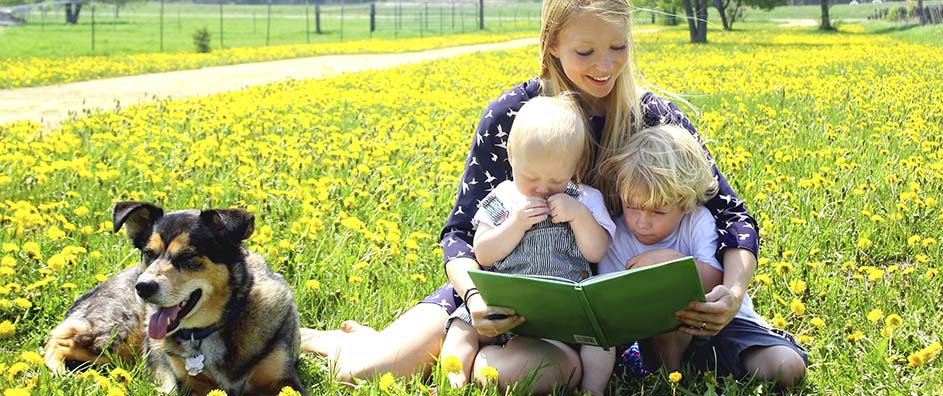In the pursuit of imparting spiritual wisdom to children, parables emerge as a remarkable pedagogical tool, capable of transcending cultural barriers and fostering profound understanding. The Baha’i teachings eloquently embrace the use of parables, revealing their unique appeal in nurturing a child’s spiritual essence. This article delves into the multifaceted role of parables in the Baha’i tradition, exploring their intrinsic qualities that render them effective for spiritual education.
Parables, by definition, are succinct narratives designed to illustrate moral or spiritual lessons. They synthesize complex ideas into digestible stories, fostering comprehension through relatable situations and characters. Children are naturally drawn to narratives; hence, parables attract their attention and stimulate their imaginations. The narrative structure resonates with a child’s intrinsic curiosity and ability to connect emotionally with characters, allowing the lessons embedded within to profoundly resonate.
One distinguishing feature of parables is their metaphorical depth. Each story holds layers of meaning, often inviting readers to engage in a process of reflection and interpretation. This characteristic is of paramount importance when teaching spiritual principles to children. A simple tale, upon further scrutiny, can reveal insights about compassion, justice, or humility, thus cultivating a child’s critical thinking skills. For example, the parable of the Good Samaritan does not merely recount an act of kindness; it implores children to explore the essence of humanity beyond societal boundaries.
Moreover, the unique appeal of parables lies in their universality. The Baha’i writings maintain that spiritual truths are not confined to one culture or tradition; instead, they resonate across various human experiences. This universality allows children from diverse backgrounds to relate to the moral lessons conveyed, fostering inclusivity and understanding. Through the language of narrative, parables become vehicles for conveying shared human values, making them indispensable in a multicultural educational framework.
Incorporating parables into spiritual education entails more than mere storytelling; it requires cultivating an environment where children feel encouraged to question, reflect, and engage with the narratives. This active participation can be orchestrated through guided discussions that prompt children to articulate their thoughts and feelings about the stories. Questions such as “What does the character’s choice tell us about kindness?” can spark meaningful dialogue, ensuring that the lesson permeates beyond the story into the child’s life experience.
The creative aspect of teaching with parables can also manifest in various activities. Articulation of stories through drawings, role-playing, or even crafting new parables nurtures the child’s creative faculties. Such activities allow children to internalize the spiritual teachings in innovative ways, better anchoring the values within their consciousness. As they engage in these creative expressions, they become co-creators of spiritual understanding, reinforcing their connection to the teachings.
Crucially, the relationship a child nurtures with parables can have lasting implications on their spiritual development. As they dilettante through the tapestry of narratives provided, children begin to define their moral compass. They learn that narratives of benevolence and integrity are not merely stories but pathways leading to authentic living. This understanding evolves as they mature, allowing parables to serve as touchstones in moments of moral ambiguity or doubt.
Furthermore, in the Baha’i context, the role of parables extends to embodying teachings relevant not only to individual growth but also to collective human advancement. Baha’i teachings hold that true spirituality is interwoven with service to humanity. Parables can illustrate the interconnectedness of all beings and the responsibilities that arise from this relationship. In teaching children about the importance of community and service, parables such as “The Lost Sheep” can impart the significance of inclusivity and caring for the less fortunate. Through such lessons, children are encouraged to nurture empathy, strengthen communal ties, and embrace the broader implications of their values in a global society.
To effectively harness the pedagogical power of parables, educators and guardians need to embody the principles they impart. Living the teachings consistently models the values encapsulated in the parables. Children are highly observant; they learn as much from actions as they do from words. When adults exemplify traits such as kindness, integrity, and forgiveness, it reinforces the lessons conveyed through parables, creating a cohesive framework for the child’s spiritual upbringing.
In conclusion, the integration of parables into spiritual education offers an array of benefits conducive to fostering a child’s spiritual awareness. Through their metaphorical richness, universality, and capacity for engagement and reflection, parables provide a foundational tool in navigating the complexities of moral and ethical development. When children grapple with the wisdom embedded in these narratives, they are not only equipped with spiritual insights but also instilled with a sense of responsibility towards themselves and their communities. This transformative journey through parables significantly enhances the landscape of spiritual learning, shaping individuals who are not only knowledgeable but also compassionate and principled in their lives.
